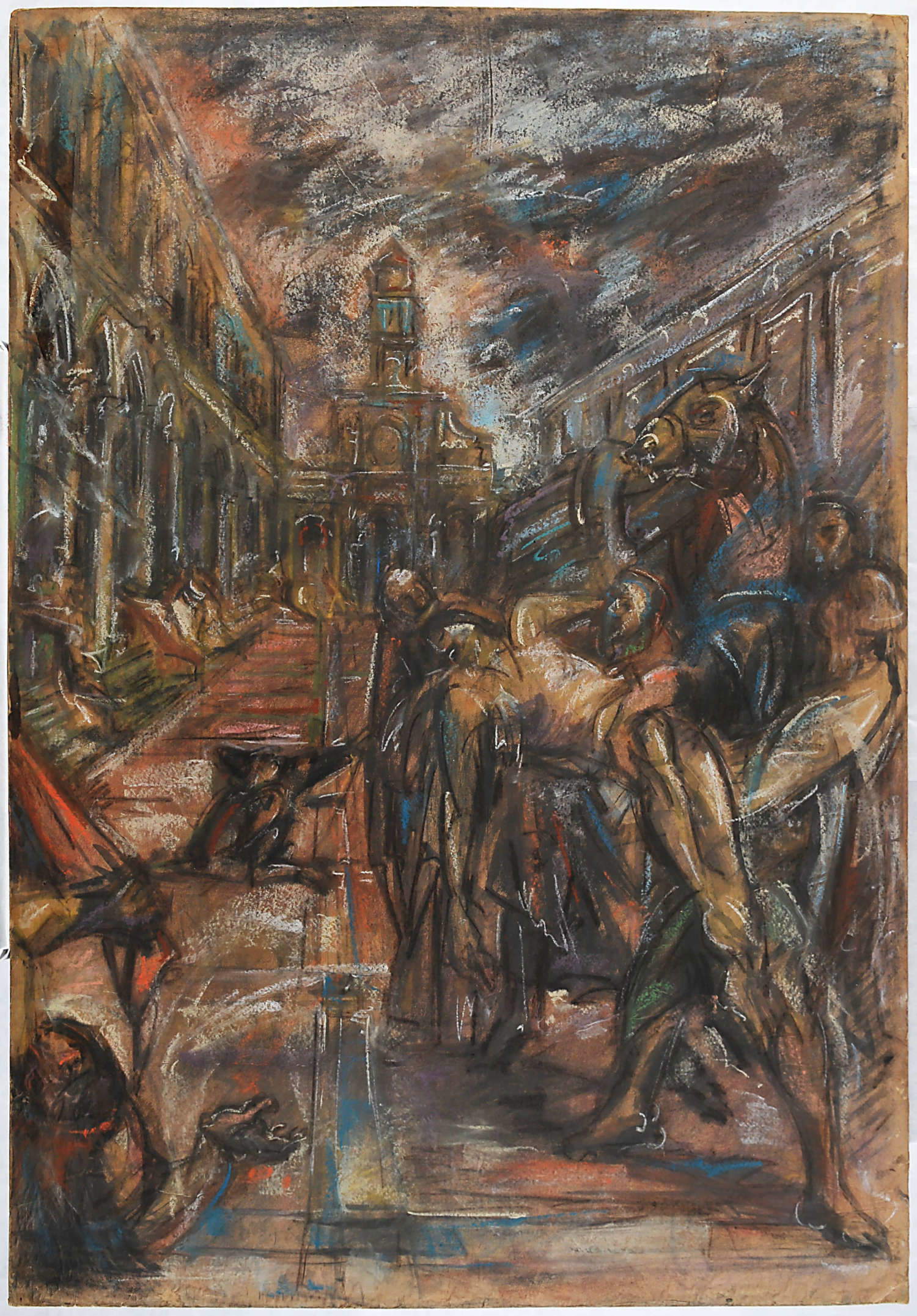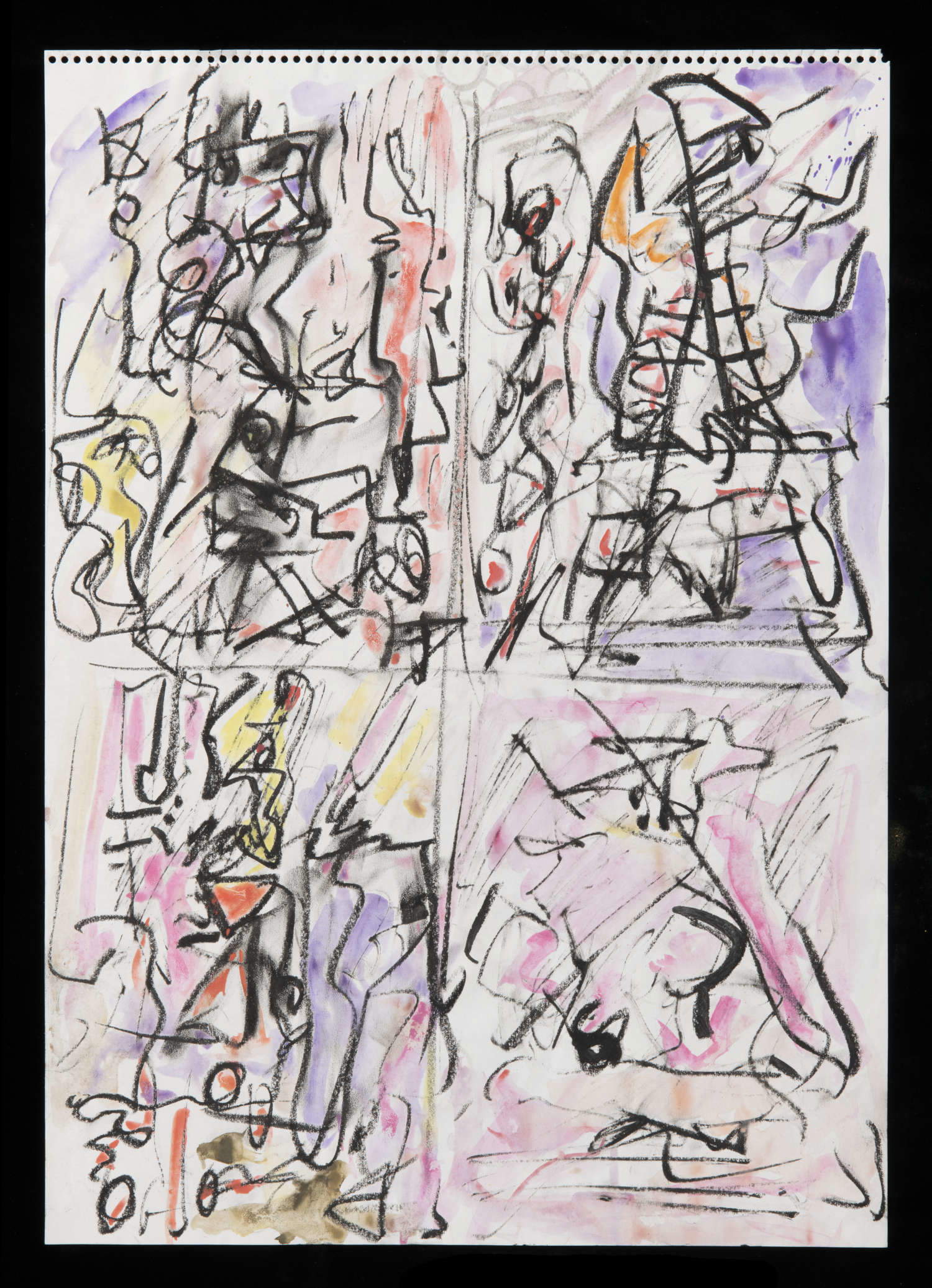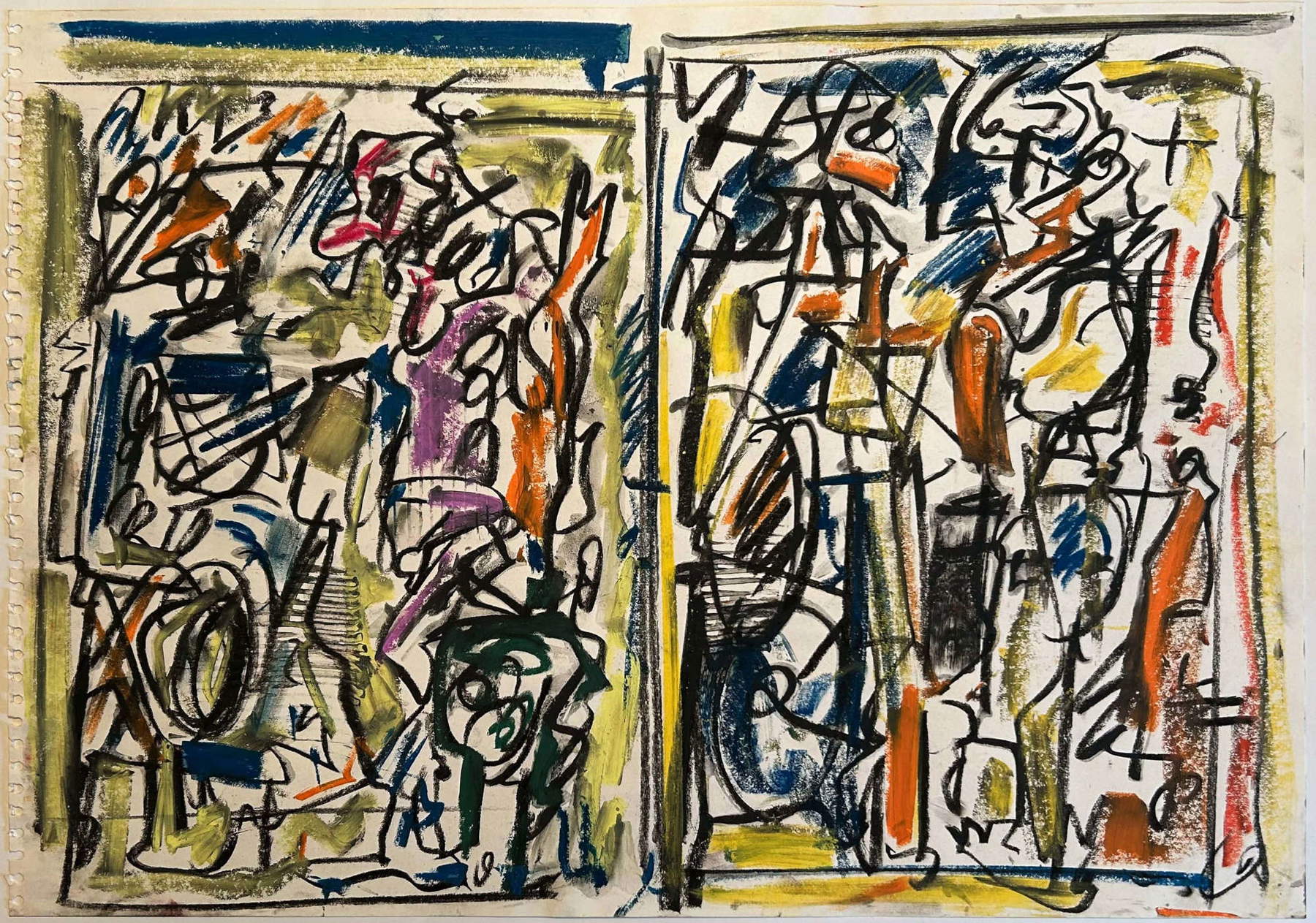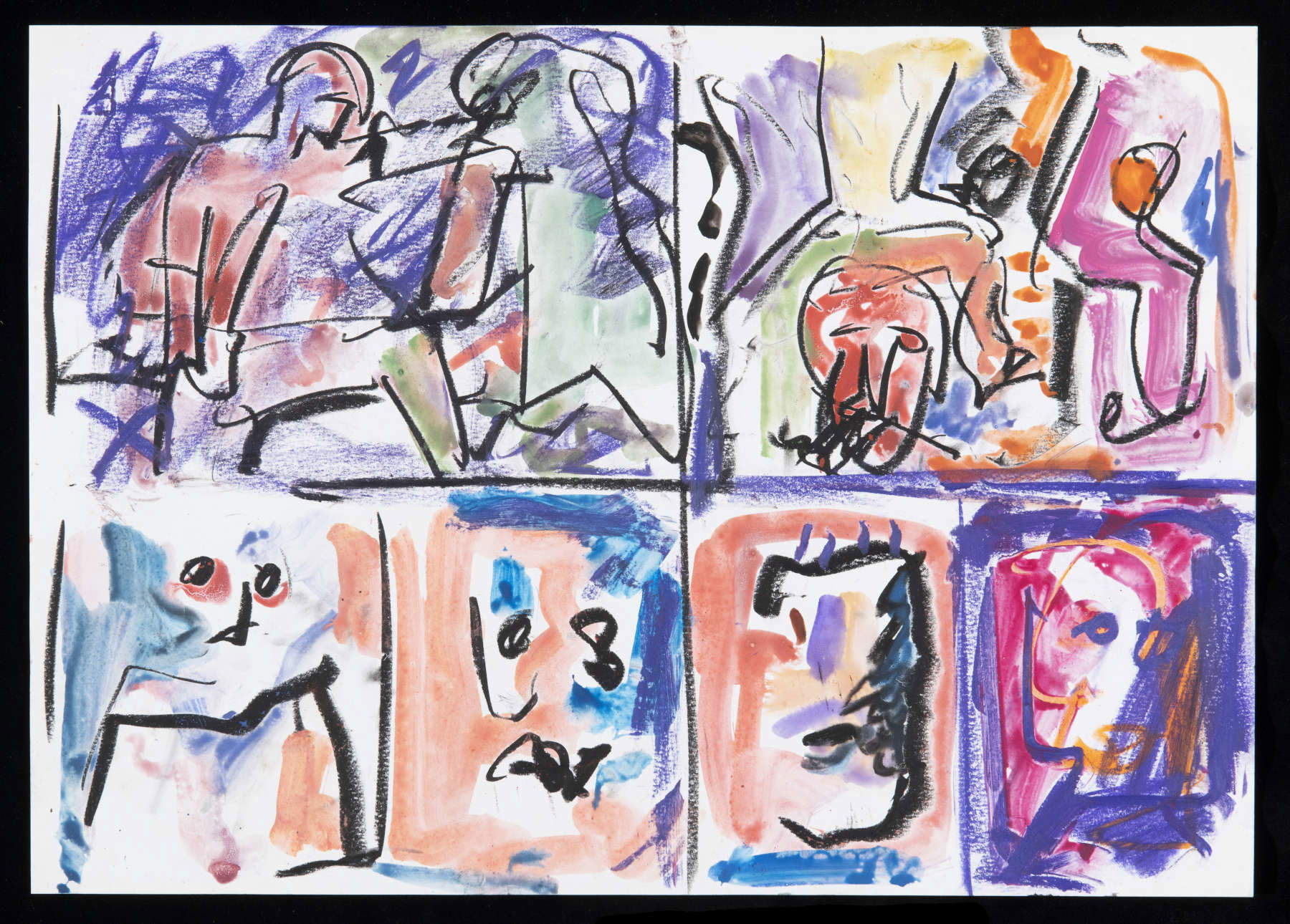From November 30, 2024 to June 2, 2025, the Fortress of Bard in the Aosta Valley will host a major retrospective exhibition dedicated to Emilio Vedova (Venice, 1909 - 2006), one of the most influential artists of the 20th century, with a selection of works ranging from large paintings to works on paper. The exhibition, entitled Questa è pittura (This is painting), is promoted by the Forte di Bard Association in collaboration with 24 Ore Cultura and the Emilio and Annabianca Vedova Foundation, and is curated by Gabriella Belli.
The exhibition aims to investigate the more purely pictorial side of the artist, detaching itself from historical or socio-political readings and focusing instead on the extraordinary visual and gestural power that characterizes Vedova’s work. The curatorial approach focuses on the energy that flows from color and material, elements that made the Venetian artist one of the most relevant voices in the European Informal movement.
Emilio Vedova has always embodied the rebellious soul of contemporary art, managing to combine his deep civic participation with his incredible painting skills. Vedova’s art is never reduced to simple aesthetic expression, but is intertwined with his condition as a man who lived history on the front lines, translating the political and social tensions of his time into his works. However, the exhibition at the Fortress of Bard aims to explore precisely that side of his painting in which the artist is fully dedicated to the language of painting, expressing a formal vitality that needs no external narrative to be understood.
“The short-circuit between reality and truth, between good and evil, that Vedova’s work masterfully brings to light in the fury of his very particular abstractionism,” explains curator Belli, "is the task of this exhibition, which comes to Valle d’Aosta almost fifty years after the exhibition Emilio Vedova. Graphics and Didactics, presented in the summer of 1975 at Tour Fromage, curated by Zeno Birolli and Vedova himself. This is painting today wants to add a piece to the knowledge of the artist, through an in-depth itinerary of his work divided into eight stages, which correspond to moments in which the creative effort struggles around existential questions."
“The project dedicated to Emilio Vedova illuminates the cultural programming of the Fortress of Bard and adds a further piece to the path of discovery of the great masters of 20th-century Italian art launched over the past few years,” says Forte di Bard Association President Ornella Badery. “The artist’s expressive power combined with a strong civil commitment make Vedova’s art one of the most representative of the Informal current with works of great impact that blend well with the severe architecture of the Fortress of Bard.”
Alfredo Bianchini, President of the Emilio and Annabianca Vedova Foundation, says, “Vedova’s rejection of realistic depictions and in any case linked to concrete visions corresponds to a courageous existential choice in the meditated conviction that his message had to be unique and, at the same time, comprehensible to all regardless of background.”



The exhibition is divided into several thematic rooms, each exploring a particular moment in Vedova’s artistic production. A journey that starts from his formative origins and comes to witness his maturity, up to his exploration of his later years, where his formal experimentation and use of color intensified.
Room 1, entitled Birth of a Painter. The Masters, is dedicated to his early artistic training, characterized by a wholly personal and non-academic approach. Despite this, Vedova is profoundly influenced by the great painters of the past, particularly the Venetian masters such as Tintoretto, Veronese, and Tiepolo, whom he was able to admire in his youthful wanderings through the calli of Venice. This influence is combined with an attraction to Cubism, which is reflected in the works exhibited in Room 2(Seeking a Way), where there are works that highlight a geometric constructivism, a phase of his production that is influenced by the lessons of the historical avant-gardes.
Room 3(Abstraction Forever) is the heart of the exhibition, with a series of works that mark Vedova’s definitive entry into the world of abstraction. In this period, the artist abandons cubist geometry in favor of a painting that becomes a direct expression of a powerful emotionality, a language that is already charged with gesture, matter and color, where form dissolves in favor of a living, pulsating painting.
Another key stage of the itinerary is represented by Room 4, entitled Occupying Space, in which Vedova explores one of his most extraordinary inventions: the “Plurimi.” These are three-dimensional assemblages, in which the painting detaches itself from the wall and invades the surrounding space, defying the traditional conventions of two-dimensional painting. In this room, the works seem to want to dialogue with the visitor’s physical space, creating a dynamic relationship between the art and its surroundings. Room 5(Leaving the Sign Free) is an invitation to discover Vedova’s creative process. Here one can admire small works that, although possessing an unprecedented expressive force, return the energy that flows from his larger work. In these small works, the artist does not spare the power of sign, color and form, showing his way of bringing the work to life without constraint, almost in a challenge between sign and matter.
The existential tragedy that characterizes Vedova’s entire oeuvre is the central theme of Room 6, entitled As if this pain were unbearable. Here, the visitor is immersed in the sense of drama and suffering that permeates many of the artist’s works, an expression that stems from an acute sensitivity to the horrors of life and history. Vedova seems to want to capture the intensity of these emotions, translating them into painting as if in a visual scream. In Room 7, titled Vertigine Piranesi, Vedova’s art takes a more architectural and disturbing turn. The works of the 1980s, laden with contrasting reds and blacks, seem to converse with the imagery of Giambattista Piranesi, evoking his famous “Prisons” through a hallucinated and disturbing vision of space. Vedova, like Piranesi, plays with architecture as visual and sonic matter, creating a universe of forms that shatter and reorganize in a dizzying flow.
Finally, Room 8(Infinite Circular) presents three large Tondi that challenge one of the most sacred forms in art history: the circle. Vedova, with his irreverent and experimental approach, reinvents this geometric form, proposing a new, more disturbing and ingenious interpretation of one of the most symbolic structures in art.








The exhibition will be accompanied by a catalog published by 24 Ore Cultura, which will offer the public a comprehensive view of the works on display and Vedova’s research. The opening ceremony, scheduled for Friday, Nov. 29, 2024 at 6 p.m., will kick off a period of great visual excitement, where Vedova’s painting will be the protagonist in one of the most evocative spaces in the Aosta Valley.
Hours: Tuesday to Friday 10 a.m. to 6 p.m., Saturdays, Sundays and holidays 10 a.m. to 7 p.m., closed Mondays. Tickets: full 12 euros, reduced 10 euros (for over 65s), 6 euros (for young people aged 19 to 25), free for holders of Abbonamento Musei Piemonte Valle d’Aosta and Abbonamento Musei Lombardia Valle d’Aosta; Membership Card Forte di Bard; under 18.
 |
| A journey through the art of Emilio Vedova at the Fortress of Bard: 31 masterpieces on display |
Warning: the translation into English of the original Italian article was created using automatic tools. We undertake to review all articles, but we do not guarantee the total absence of inaccuracies in the translation due to the program. You can find the original by clicking on the ITA button. If you find any mistake,please contact us.